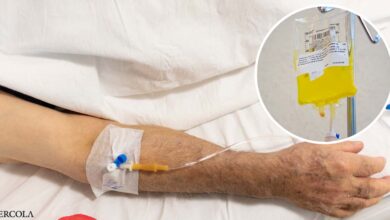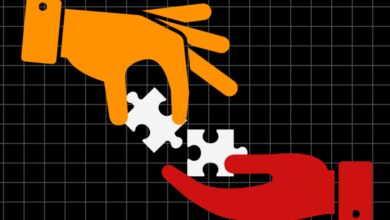The practice of prescribing medical devices via telemedicine is increasing


There are all sorts of specialty services offered by telemedicine – telepsychiatry, teleradiology, tele-ICU, to name a few. But there’s one unique emerging telemedicine service that deserves attention: medical device prescriptions via virtual care.
UpScriptHealth specializes in this form of healthcare delivery. Axena Health, a medical device company focused on women’s pelvic health, recently launched a telehealth service with UpScriptHealth to connect women with prescribers who can assess their incontinence symptoms and, if appropriate, prescribe the Leva System. With the growing shortage of obstetricians and gynecologists in the United States, the new telehealth service will allow women to quickly and easily access effective frontline treatment.
UpScriptHealth also partners with other medical device companies to increase access—for example, it supports telehealth consultations for Spark Biomedical’s Sparrow Ascent, the only FDA-approved, non-drug, non-addictive, non-invasive wearable treatment technology to reduce opioid withdrawal symptoms. And it’s partnering with Lucid Diagnostics to increase access to esophageal precancer screening via telehealth.
We interviewed UpScriptHealth founder and CEO Peter Ax to discuss his direct-to-consumer telehealth company, why medical devices are a good fit for telemedicine, what the entire process of getting a medical device prescription via telemedicine looks like, how a telehealth company and a medical device manufacturer work together, and what lessons he’s learned about delivering telehealth.
Q. Your direct-to-consumer telehealth company specializes in medical device prescriptions. What characteristics of medical devices make them suitable for telemedicine?
ONE. Medical devices are particularly well-suited to telemedicine because they allow for remote monitoring and management, which is a significant advantage for both healthcare providers and patients. By using connected medical devices, healthcare providers can monitor a patient’s condition in real time, collecting important health data continuously or at scheduled intervals without having to visit them in person.
This capability is particularly valuable in the management of chronic conditions such as diabetes, where regular monitoring and timely intervention are critical to effective treatment control and adherence.
The convenience and accessibility of telemedicine is transformative for patients. Through telemedicine, patients can access medical device prescriptions and follow-up care from the comfort of their own home. This is especially beneficial for those living in remote or underserved areas, where healthcare facilities may be sparse and travel can be difficult.
Telemedicine also serves people with mobility issues or those who need frequent monitoring, saving them from having to make multiple trips to the doctor’s office and reducing the burden of time and cost.
Additionally, telemedicine streamlines the process of obtaining medical equipment, significantly improving efficiency. Traditional methods often involve multiple in-person appointments, from initial consultations to follow-up visits for device fitting and instruction.
Telemedicine simplifies this process by allowing for virtual consultations, where healthcare providers can assess patients, prescribe appropriate equipment, and provide detailed instructions for use – all in one session. This not only saves time for both patients and providers, but also speeds up the process of starting treatment.
Telehealth platforms can also provide educational resources for the medical device being used, including comprehensive virtual training sessions, instructional videos, and real-time support. These resources ensure that patients understand how to use their device correctly and effectively, which is critical to achieving desired health outcomes.
For example, in our partnership with Axena Health, we ensure that patients prescribed the Leva Pelvic Health System receive detailed instructions on how to use it. This includes online consultations where healthcare providers explain how to use the system correctly, supported by real-time feedback directly from the device.
In addition to patient education, telehealth platforms facilitate ongoing patient engagement and support. Healthcare providers can remotely monitor patient progress, provide timely advice, and make necessary adjustments to treatment plans based on data collected by medical devices.
This ongoing interaction encourages greater patient engagement, adherence to treatment regimens, and overall satisfaction with the care received.
Ultimately, integrating medical devices with telemedicine will transform healthcare delivery by making it more accessible, efficient, and patient-centric. This combination harnesses the power of technology to bridge gaps in access to healthcare, especially for those who need it most, and ensures that patients receive high-quality care tailored to their individual needs.
Q. Please explain the entire process of getting a medical device prescription via telehealth.
ONE. The process of getting a medical device prescription via telehealth typically begins with the patient visiting the brand’s website, where they may see a “button” asking if they want to connect with a telehealth provider. If the patient clicks that button, they will be taken to the telehealth platform, where they will complete a short questionnaire detailing their medical history and symptoms.
This is followed by an online consultation with a licensed healthcare provider who will review the questionnaire, discuss symptoms, and determine if the medical device is appropriate for the patient’s condition. If deemed appropriate, the healthcare provider will write a prescription and explain how to use the device. The prescribed device will then be shipped to the patient’s home, along with instructions, online training, and ongoing support to ensure proper use.
Finally, patients can be re-examined online to monitor progress, make necessary adjustments to the treatment plan, and ensure the device is working effectively.
Q. You work with Axena Health and its pelvic health medical device for women, Spark Biomedical and its opioid withdrawal medical device, and Lucid Diagnostics and its esophageal precancer testing. Tell us a little bit about how a telehealth company and a medical device manufacturer work together.
ONE. A telehealth company and a medical device manufacturer can collaborate by integrating the manufacturer’s products into a telehealth platform, allowing patients to access and receive prescriptions for these devices through online consultations with physicians who are highly trained in medical devices.
The telehealth company provides educational and training resources to patients, ensuring they understand how to properly use medical devices through virtual training sessions, instructional videos, and real-time support. Medical devices can collect and transmit health data to the telehealth platform, allowing healthcare providers to remotely monitor a patient’s condition and make informed decisions about their treatment.
Both telehealth companies and medical device manufacturers ensure compliance with regulatory requirements, such as FDA approvals and HIPAA regulations, to protect patient safety and privacy.
For example, UpScriptHealth has partnered with Axena Health to provide patients with access to the Leva Pelvic Health System through a seamless telehealth experience. Axena Health has integrated UpScriptHealth’s telehealth platform directly into their website, allowing women to easily receive prescriptions and support for the Leva System.
Additionally, through a partnership with Spark Biomedical, UpScriptHealth’s platform is increasing access to Sparrow Ascent, the only FDA-approved, non-drug, non-addictive, non-invasive, wearable treatment technology to alleviate opioid withdrawal symptoms.
UpScriptHealth also partnered with Lucid Diagnostics to support telehealth consultations for the EsoGuard Esophageal DNA test, a commercially available diagnostic test that has the potential to serve as a broad screening tool for at-risk patients to reduce risk through early detection of esophageal precancer.
As a result, more than 4,000 firefighters underwent esophageal precancer testing using a telehealth protocol.
Q. What lessons have you learned about delivering health care remotely?
ONE. First, effective patient engagement is critical. Providing comprehensive educational resources, a user-friendly platform, and feedback support helps patients feel confident and informed about their treatment.
Second, compliance with regulatory requirements, such as FDA approvals and HIPAA regulations, is critical to maintaining patient safety and trust. Ongoing efforts to maintain compliance are necessary to protect patient information and ensure the effectiveness and safety of the treatments we provide.
Finally, gathering ongoing feedback from patients and healthcare providers helps us identify areas for improvement and drive innovation in our telehealth services. This feedback loop is critical to making continuous improvements and delivering high-quality care.
Follow Bill’s HIT coverage on LinkedIn: Bill Siwicki
Email him: [email protected]
Healthcare IT News is a publication of HIMSS Media.




